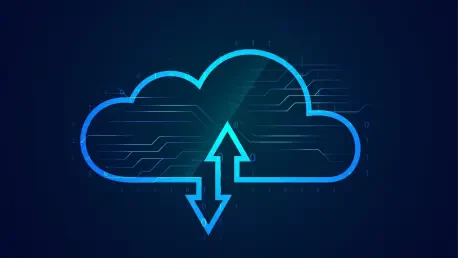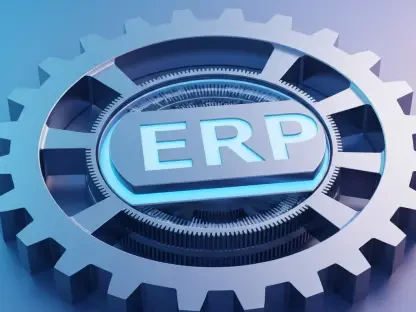In this interview, we delve deep into cloud observability and cost management with Anand Naidu, a seasoned expert in both frontend and backend development. Naidu elucidates various facets of cloud observability, including telemetry data types, high cardinality metrics, and strategies to optimize costs. We explore methods for data ingestion and retention, the challenges of tool sprawl, and the importance of cost-conscious culture, weaving through insights on open-source solutions, AI utilization, and predictive analytics. The conversation is illuminating for anyone looking to navigate the complexities of observability in modern cloud infrastructures.
Can you explain what cloud observability means and why it’s important for modern organizations?
Cloud observability is essential in contemporary organizations as it provides deep insights into application functionality, identifying problems and maintaining a smooth user experience. It is about having visibility into how systems are performing and reacting to ensure reliability and resolve any discrepancies efficiently. This capability is crucial given the increasing dependability on cloud-based services and the complex, dynamic nature of cloud environments.
What types of telemetry data do companies need to keep track of for effective cloud observability?
Companies need to monitor a mix of logs, metrics, and traces. Logs offer detailed records of events within applications, metrics provide quantitative measures of performance, and traces capture the journey of requests across services. Together, they provide a comprehensive view that supports real-time monitoring, troubleshooting, and long-term analysis.
Why do observability costs tend to increase over time?
Observability costs rise over time primarily due to growth in data volume—more applications and deeper monitoring lead to collecting and storing more telemetry data. Additionally, expanding demands for retaining historical data for analysis and compliance, coupled with high-cardinality metrics, contribute significantly to escalating expenses.
What are some of the biggest drivers of rising observability costs?
Key drivers include increased data ingestion from multiple sources, prolonged data retention requirements, and high cardinality metrics which result in vast data points. Furthermore, overcollection of unnecessary data and tool sprawl where multiple disconnected tools are used, leading to data duplication, exacerbate costs.
How can data ingestion volumes impact observability costs?
Higher volumes of data ingestion directly translate to increased storage and processing demands, substantially raising costs. If unoptimized, unnecessary or redundant data can flood systems, requiring significant resource allocation which drives up expenses.
Why is data retention such a costly aspect of cloud observability?
Data retention is costly due to the need for maintaining extensive historical records for compliance and analysis. Keeping large volumes of high-granularity data requires substantial storage, leading to increased expenditure as storage prices continue to accrue over time.
Can you explain what high cardinality metrics are and how they affect costs?
High cardinality metrics are those with multiple unique labels or dimensions, leading to an explosion in the number of data points. Managing such metrics requires extensive resources both in terms of processing and storage, thereby significantly affecting costs due to the complexity and size of the data involved.
What is overcollection in observability, and how does it contribute to increasing costs?
Overcollection refers to the gathering of more telemetry data than necessary, often surpassing immediate needs for monitoring or analysis. This practice leads to inflated data volumes, which subsequently increases storage and processing requirements, directly heightening costs without necessarily adding value.
How does tool sprawl lead to duplications in data ingestion?
Tool sprawl occurs when multiple observability tools operate in silos, each potentially ingesting the same data sets. This results in redundant data storage and processing, leading to inefficiencies and heightened costs due to duplicated efforts and overlapping resource use.
What role does cost awareness play in managing observability expenses?
Cost awareness is crucial as it aligns resource provisioning with financial impacts. It involves educating teams about the financial implications of their observability decisions, setting budgets, and implementing accountability measures. By fostering a cost-conscious culture, organizations can optimize spending and enhance the alignment of observability practices with business objectives.
How can optimizing data ingestion help reduce observability costs?
Optimizing data ingestion involves focusing on collecting only the most valuable data, thus reducing unnecessary volume. Employing techniques like filtering, whitelisting, and strategic sampling can significantly cut down on the amount of data processed and stored, leading to lower costs while maintaining essential insights.
What strategies can be used to filter and whitelist data?
Effective strategies include aggressive filtering of non-critical logs, focusing on essential metrics that impact application performance, and prioritizing traces that inform on service dependencies. By narrowing down the data to what’s truly important, organizations can reduce data volume and associated costs.
How can strategic sampling reduce data volumes without sacrificing important information?
Strategic sampling allows for capturing a statistically significant subset of high-volume data streams, like traces and logs, ensuring that key trends and anomalies can still be detected. This approach lessens the strain on resources by reducing the sheer volume of data processed and stored.
What is the significance of adjusting scrape intervals for metric collection?
Adjusting scrape intervals helps align data collection with true business needs by reducing how often metrics are collected, thereby decreasing data points while still keeping sufficient insight. It allows for careful balancing of cost with the necessity for timely data, often resulting in significant resource savings.
How can data transformation rules and compression techniques help reduce costs?
Data transformation rules streamline incoming data by parsing and focusing on relevant information, minimizing the volume processed and stored. Compression techniques further enhance this by reducing data size without losing meaning, optimizing both storage and transmission efficiency, which lowers costs.
What are intelligent data retention policies, and how can they save money?
Intelligent data retention policies involve organizing data into short-term and long-term storage based on its relevance and usage frequency. By applying these policies, organizations can optimize storage costs by prioritizing active data and archiving or deleting less critical historical data.
How should organizations determine the retention period for different types of data?
Organizations should assess data value, compliance requirements, and usage frequency to establish appropriate retention periods. For instance, logs needed for immediate troubleshooting might retain for days, whereas audit logs necessary for compliance might retain for years. Tailoring retention helps balance cost with accessibility needs.
What are some automated processes that can help with data archiving or deletion?
Automation can play a key role in managing data lifecycle through predefined retention policies that automatically archive or delete data when thresholds are reached. This minimizes manual oversight, reduces errors, and ensures compliance with organizational data management strategies.
How can observability tools help identify inefficiencies in cloud infrastructure?
Observability tools provide visibility into resource usage and performance, enabling the identification of idle or underutilized resources. By highlighting such inefficiencies, organizations can appropriately adjust resources—like stopping unnecessary services or right-sizing infrastructure—which contributes to cost savings.
Can you explain the benefits of utilizing autoscaling and spot instances for cost savings?
Autoscaling allows resource scaling based on demand, ensuring that organizations pay only for what is needed, preventing overprovisioning. Spot instances offer cost benefits for flexible workloads by taking advantage of spare capacity at a reduced rate, allowing additional savings for fault-tolerant applications.
How does decentralized and distributed observability contribute to cost reduction?
Decentralized and distributed observability can lower costs by diversifying data management strategies away from relying solely on expensive platforms. Exploring open-source and native cloud tools lowers infrastructure expenses and provides flexibility without compromising on monitoring capabilities.
What are the potential benefits and challenges of using open-source solutions for observability?
Open-source solutions offer cost savings by eliminating platform fees and allowing customizability. However, they come with challenges like operational overhead and the need for internal expertise to manage and maintain them. Balancing these factors is key for successful implementation.
Can you explain the mixed-mode approach for observability tools?
The mixed-mode approach uses a combination of commercial and open-source tools to balance cost and functionality. This strategy allows organizations to employ robust commercial solutions for mission-critical functions while utilizing more affordable, versatile open-source tools for other purposes.
What role do native cloud observability tools play in reducing costs?
Native cloud tools, such as AWS CloudWatch or Azure Monitor, typically offer more integrated, cost-effective solutions compared to third-party systems. By using what’s natively provided, organizations usually benefit from reduced charges and seamless compatibility with their existing cloud infrastructure.
Why is fostering a FinOps and cost-conscious culture important for observability cost management?
Fostering a FinOps culture ensures that teams are educated about financial impacts and encourages accountability and proactive cost management. This cultural shift can drive significant reductions in costs by ingraining financial responsibility into decision-making processes related to observability tools and practices.
How can teams be educated about the cost implications of observability choices?
Education can be facilitated through training programs, regular workshops, and incorporating cost awareness into standard operating procedures. Reinforcing the financial impact related to their choices helps teams make informed decisions that align with budgetary constraints.
What steps are involved in setting budgets and alerts for observability expenditures?
Setting budgets involves analyzing past spending patterns, forecasting future needs, and determining budget limits. Alerts can be established to notify stakeholders as expenses approach thresholds, enabling timely adjustments and preventing budget overruns through guided oversight.
How can tagging and labeling be used for cost allocation and chargeback?
Tagging and labeling practices allow organizations to attribute costs accurately to specific teams, projects, or business units. Through precise cost tracking and reporting, these practices promote fairness and accountability, thus encouraging responsible spending behaviors.
What should be included in regular reviews of observability spending?
Regular reviews should encompass spending trends, resource utilization, efficiency, and alignment with business goals. These reviews help identify high-cost areas, provide insights for optimization, and improve financial strategies to maintain effective observability within budget constraints.
How can AI and machine learning be leveraged for cost optimization in observability?
AI and machine learning facilitate cost optimization by providing insights through anomaly detection, predictive analytics, and automated remediation. These technologies help identify inefficiencies and forecast needs, allowing organizations to proactively adjust resources and reduce waste.
Can you describe some specific uses of anomaly detection and predictive analytics in observability?
Anomaly detection identifies unexpected spikes in resource usage or data ingestion, signaling potential issues or misconfigurations. Predictive analytics forecasts future observability requirements based on historical trends, enabling organizations to plan and optimize resources and costs proactively.
How can automated remediation help eliminate wastage in cloud resources?
Automated remediation leverages predefined actions to address inefficiencies such as overprovisioned resources or detected anomalies. This automation not only reduces wastage by dynamically adjusting resources but also minimizes manual interventions, enhancing overall operational efficiency.









